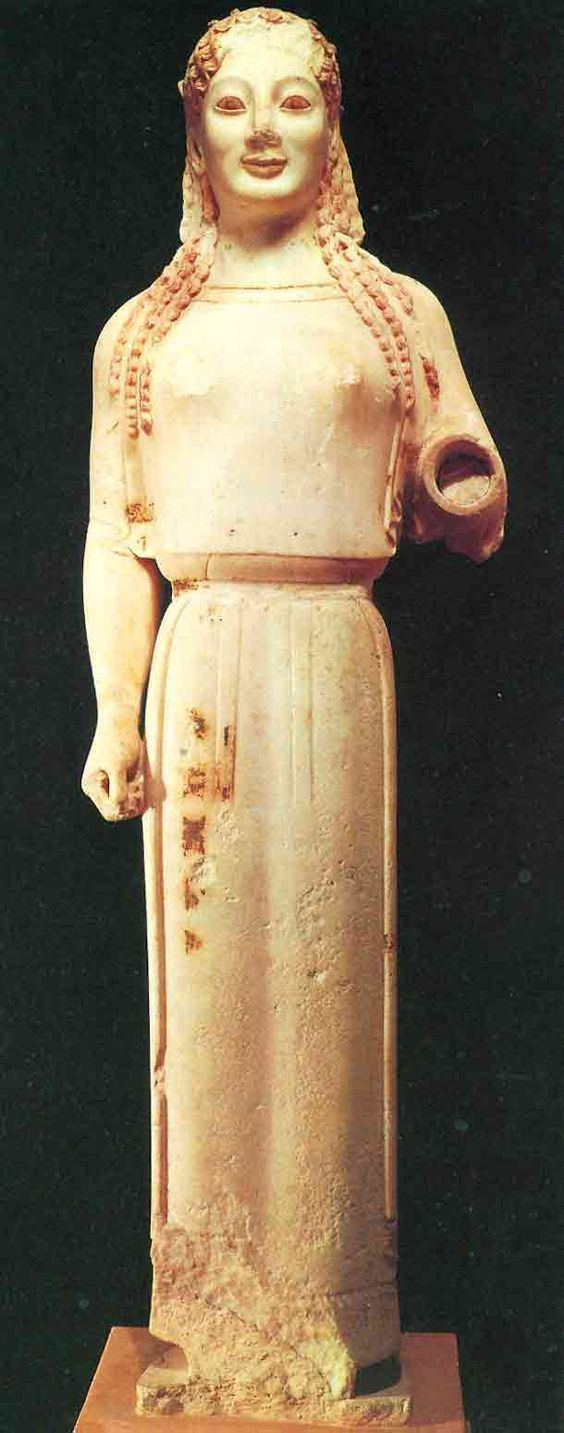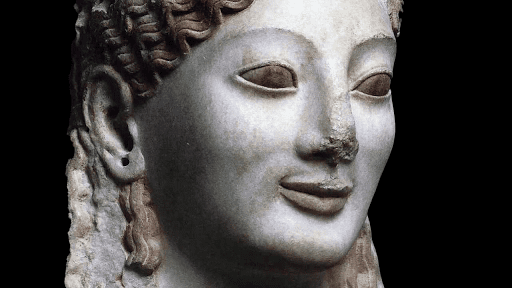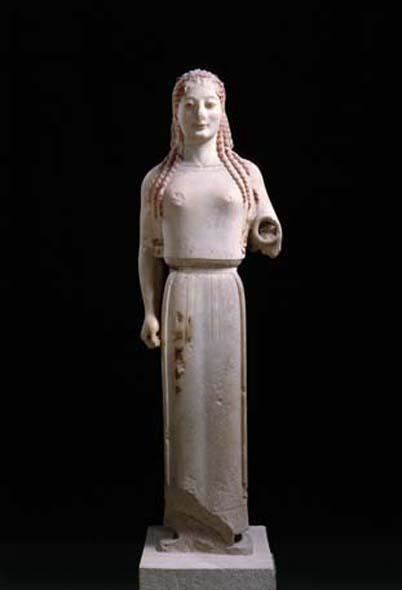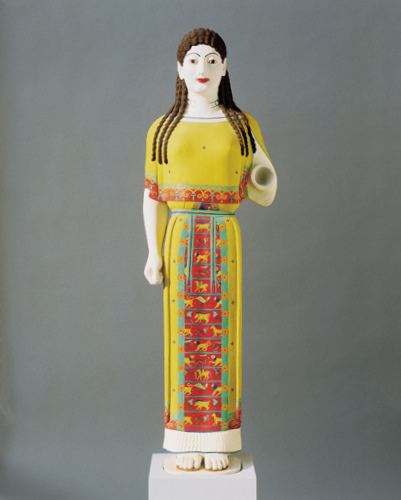 | ||
Similar Kritios Boy, Kroisos Kouros, Lady of Auxerre, Doryphoros, Moschophoros | ||
Peplos kore from the acropolis
The Peplos Kore is a statue of a girl and one of the most well-known examples of Archaic Greek art. The 118 cm high white marble statue was made around 530 BC and originally was colourfully painted. The statue was found, in three pieces, in an 1886 excavation north-west of the Erechtheion on the Athenian Acropolis and is now in the Acropolis Museum in Athens.
Contents

The Peplos Kore (peplos being the type of robe or shawl-like fabric draped over the figure and kore meaning a girl or young female) stands at approximately 1.18 meters high. It is carved from fine grained Parian marble. Traces remain of the original paint.

Acropolis den peplos kore
Description

The name of the statue comes from the heavy woolen garment worn by the girl (Greek: κόρη, kore), the Dorian peplos, which was no longer actually in fashion when the marble statue was made. Underneath it, the girl wears a thin chiton which peeps out from the sleeves and hem. Bore holes on the head and shoulders indicate that the statue was decorated with bronze head decorations (probably a wreath) and shoulder fibulae. The left arm was made of a separate piece of stone and is now lost.

The Peplos Kore is ascribed to the Rampin Master who is named for another head, very similar in style, which was in the Rampin Collection and is now on display in the Louvre.

In Brinkmann's opinion, this statue type does not depict mortal girls but goddesses. Her posture corresponds in no way to the late archaic Kore, "who steps forward with he left leg, holds her skirt with her left hand and holds fruit in the crook of her right arm." On the Peplos Kore, there are bore holes in the lowered right arm and the bent left arm which suggest she held a bow and arrows or a shield and helmet. The bore holes on the head which are usually interpreted as being for a wreath could perhaps have accommodated a loose fitting crown.

A number of other similar kore statues, (plural korai), have been discovered at the Acropolis, dating to as early as the early 6th century BCE. Some have suggested that patrons most likely commissioned the kore statues to serve as offerings to worshiped deities, as votive figures who stand in their place. Some wealthier individuals used the kore statues as grave markers for deceased family members. The figure's “perfect symmetry and unearthly expression" suggests that the Peplos Kore may represent an ideal youthful embodiment of the deceased person's soul, rather than a physical likeness. But the Peplos Kore holds many distinct differences from the other discovered kore figures, as the work is found to be dressed in a particular manner, unlike the others, leading some archaeologists to suggest the statue may have been a goddess representation.

The statue is carved in the round, but designed to be seen from the front, with many details, especially in the facial features. The face displays an “archaic smile” similar to many Greek statues from the Archaic period. Webster's Dictionary has defined an archaic smile as “an expression that resembles a smile and is characteristic of early Greek sculpture”. The kore statues depict young, clothed female figures, in contrast to their male counterparts, the kouros figures which are presented as muscular nude males.
In 1975, the Museum of Classical Archaeology attempted to replicate the sculpture’s original appearance by painting a cast of the figure. The replica was then displayed next to a second, unpainted cast as a challenge to the erroneous equation of ancient Greek sculpture with pure white marble.
